 |
|
21 - 25 August 2011
San Diego Convention Center
San Diego, California United States |
SPIE Optics and Photonics
 |
|
21 - 25 August 2011
San Diego Convention Center
San Diego, California United States |
Charge generation dynamics at nano-scale interfaces in
all-organic and hybrid materials
Paper 8098-11 of Conference 8098
Date: Sunday, 21 August 2011
Author(s): Laura M. Herz, Univ. of Oxford (United Kingdom)
Conjugated polymers and molecules are increasingly used as cheap artificial
light-harvesting materials in photovoltaic devices. The large exciton
binding energy in these systems necessitates the use of blends comprising at
least two materials at whose interface a type-II heterojunction is formed,
thus making charge separation energetically favourable. Examples of
all-organic materials are blends of conjugated polymers with single-walled
carbon nanotubes (SWNTs) with the latter promising large electron mobilities
and percolation paths. We have investigated the charge photogeneration
dynamics at the interface formed between SWNTs and poly(3-hexylthiophene)
(P3HT) using a combination of femtosecond spectroscopic techniques [1]. We
demonstrate that photoexcitation of P3HT forming a single molecular layer
around a SWNT leads to an ultrafast ( 430 fs) charge transfer between the
materials. The addition of excess P3HT leads to long-term charge separation
in which free polarons remain separated at room temperature. Our results
suggest that SWNT-P3HT blends incorporating only small fractions (1%) of
SWNTs allow photon-to-charge conversion with efficiencies comparable to
those for conventional (60:40) P3HT−fullerene blends, provided that
small-diameter tubes are individually embedded in the P3HT matrix. In
addition, hybrid interfaces comprising organic dyes as sensitizer monolayers
on metal-oxide mesostructures films have been highly successful when
implemented in so-called dye-sensitized solar cells (DSSCs). We have used
optical-pump terahertz-probe spectroscopy to explore the photoinduced
conductivity dynamics in such mesoporous metal-oxide films [2]. We extract
early-time mobility values and compare these to bulk values in order to
determine factors limiting electron movement in these systems. In addition,
we have utilized terahertz spectroscopy to investigate the influence of
surface treatments for the metal oxide on early-time charge dynamics. For
example, surface treatment of the mesoporous TiO2 with TiCl4 has been found
to be critical to enable efficient operation of DSSCs. However, we find that
neither early-time charge mobility nor charge injection rate or decay times
are significantly affected by the treatment, which suggests that it may,
instead, have an impact on phenomena occurring on longer time scales. [1] S.
D. Stranks, C. Weisspfennig, P. Parkinson, M. B. Johnston, L. M. Herz, and
R. J. Nicholas, Nano Lett. 11, 66 (2011). [2] P. Tiwana, P. Parkinson, M. B.
Johnston, H. J. Snaith, and L. M. Herz , J. Phys. Chem. C 114, 1365-1371
(2010).
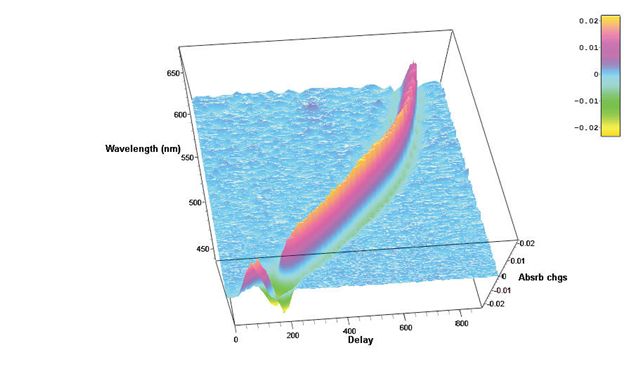 |
Hatteras-D
femtosecond transient absorption data acquisition system Future nanostructures and biological nanosystems will take advantage not only of the small dimensions of the objects but of the specific way of interaction between nano-objects. The interactions of building blocks within these nanosystems will be studied and optimized on the femtosecond time scale - says Sergey Egorov, President and CEO of Del Mar Photonics, Inc. Thus we put a lot of our efforts and resources into the development of new Ultrafast Dynamics Tools such as our Femtosecond Transient Absorption Measurements system Hatteras. Whether you want to create a new photovoltaic system that will efficiently convert photon energy in charge separation, or build a molecular complex that will dump photon energy into local heat to kill cancer cells, or create a new fluorescent probe for FRET microscopy, understanding of internal dynamics on femtosecond time scale is utterly important and requires advanced measurement techniques. Reserve a
spot in our
Ultrafast Dynamics Tools
training workshop in San Diego, California. |
|
|
Beacon Femtosecond Optically Gated Fluorescence Kinetic Measurement System
-
request a quote -
pdf Reserve a
spot in our
Ultrafast Dynamics Tools
training workshop in San Diego, California. |
Del Mar Photonics Products updates
THz products:
THz Spectrometer kit with Antenna
THz transmission setup
THz time domain spectrometer Pacifica fs1060pca
THz time domain spectrometer Pacifica fs780pca
THz detectors: Golay cell and LiTaO3 piroelectric detectors
PCA - Photoconductive Antenna as THz photomixer
Pacifica THz Time Domain Spectrometer -
Trestles Pacifica
Holographic Fourier Transform Spectrometer for THz Region
Wedge TiSapphire Multipass Amplifier System -
THz pulses generation
Terahertz Spectroscopic Radar Mobile System for Detection of Concealed Explosives
Band pass filters with center wavelengths from 30 THz into GHz range
Long pass filters with standard rejection edge wavelengths from 60 THz into GHz range
Generation of THz radiation using lithium niobate
Terahertz crystals (THz):
ZnTe,
GaP,
LiNbO3 -
Wedge ZnTe
Pulsed terahertz reflection-scattering measurements
Paper 8119-4 of Conference 8119
Date: Sunday, 21 August 2011
Author(s): Shu-Zee A. Lo, Edwin J. Heilweil, National Institute of Standards and
Technology (United States)
We present a method for measuring terahertz reflection and scattering from
samples by modification of an existing pulsed terahertz setup. By scanning both
a mirror pair periscope and another directional mirror around the sample under
test, we are able to obtain angular dependent time delay scans, spectra, and
detailed characteristics of the reflected/scattered terahertz pulse. Using this
approach, we report reflection-scattering information from a flat gold mirror, a
paper index card and other samples demonstrating the applicability of the
approach.
Terahertz wave generation with multi-physics mechanisms
Paper 8120-55 of Conference 8120
Date: Monday, 22 August 2011
Author(s): Shizhuo Yin, Yaohui Gao, Jimmy Yao, The Pennsylvania State Univ.
(United States)
In this paper, we present a new method of terahertz wave generation by employing
multiple physics mechanism, which can improve the overall efficiency of
terahertz wave generation.
Design and analysis of metamaterials for the continuous wave terahertz laser
Paper 8093-35 of Conference 8093
Date: Tuesday, 23 August 2011
Author(s): Jun Luo, Huazhong Univ. of Science and Technology (China)
We demonstrate some metamaterials in the terahertz frequency regime fabricated
on n-GaAs substrate. The influences of substrate and the shapes of split ring
resonators(SRRs) on the terahertz resonance are experimentally investigated at
several terahertz frequencies of continuous wave terahertz laser in turn, such
as 1.4THz, 2.52THz, 4.25THz, etc., some SRR arrays can obtain about 80 percent
absorption of THz amplitude transmission. In addition, computer simulations of
the spectral response of the chosen planar metamaterials are performed to
analyze the resonance frequency, surface current density and local electric
field, which agree well with measured results.
Reflection-geometry sub-terahertz-wave imaging for biological materials using an
integrated photonic transceiver
Paper 8119-1 of Conference 8119
Date: Sunday, 21 August 2011
Author(s): Hiroshi Ito, Hiroshi Yamamoto, Kitasato Univ. (Japan); Yoshifumi
Muramoto, Tadao Ishibashi, NTT Photonics Labs. (Japan)
We developed a microstrip-line-based circulator circuit for operations at around
270 GHz, and obtained a peak internal signal-to-background ratio of about 10.
The fabricated circulator was integrated with a photomixer
(uni-traveling-carrier photodiode) and a Schottky barrier diode to construct a
transceiver module for the sub-THz reflection-geometry imaging. The
characteristic of the circulator was evaluated by measuring images at
frequencies from 240 to 310 GHz, and it was confirmed that a practical image
contrast could be obtained for a bandwidth of about 20 GHz. Based on these
results, we demonstrated in-vivo imaging of a human finger at 270 GHz.
Experimental verification of the explosives identification model in THz range
Paper 8119-2 of Conference 8119
Date: Sunday, 21 August 2011
Author(s): Przemyslaw Zagrajek, Radoslaw Ryniec, Tomasz Trzcinski, Norbert
Palka, Military Univ. of Technology (Poland)
The aim of this paper was the verification of our identification model. The main
assumption of our model was the possibility of the distinction between indicated
compounds based on several narrow band detectors of terahertz radiation. Achieve
of this frequency points was done with measurement data from FT-IR obtained in
vacuum. The influence of absorption in water vapor was added numerically from
Hitran simulation. The verification procedure was carried out with Time Domain
Spectroscopy (for distance below 20 cm) and with narrow band sources (for
distances above 20 cm). This verification was prepared in laboratory, controlled
conditions. Our results confirm the possibility of application of the model in
real THz stand-off security system.
Explosives identification model in reflection mode for THz security system
Paper 8119-3 of Conference 8119
Date: Sunday, 21 August 2011
Author(s): Radoslaw Ryniec, Tomasz Trzcinski, Przemyslaw Zagrajek, Mieczyslaw
Szustakowski, Military Univ. of Technology (Poland)
The aim of this paper was to obtain the identification model in refection mode.
Results Time Domain Spectroscopy were used to prepare our algorithm. This study
has focused on developing several feature extraction methods with intuitive
justifications in the problem space. A related problem to feature extraction is
that of feature selection. For this reasons this extraction and selection
methods of THz spectra are introduced. Then a complete THz classification
framework including feature extraction scheme and Mahalanobis classifier was
presented. Our results confirm the possibility of application of the model in
real THz stand-off security system.
Recent advances in molecular spectroscopy and its application to frequency
stabilization of terahertz quantum-cascade lasers
Paper 8119-6 of Conference 8119
Date: Sunday, 21 August 2011
Author(s): Heinz-Wilhelm Hübers, Deutsches Zentrum für Luft- und Raumfahrt e.V.
(Germany) and Technische Univ. Berlin (Germany); Rene Eichholz, Sergeij Pavlov,
Heiko Richter, Alexei Semenov, Deutsches Zentrum für Luft- und Raumfahrt e.V.
(Germany); Martin Wienold, Lutz Schrottke, Manfred Giehler, Rudolf Hey, Holger
Grahn, Paul-Drude Institut für Festkörperelektronik (Germany)
High-resolution gas phase spectroscopy at terahertz (THz) frequencies is a
powerful tool for the investigation of of molecules and atoms. However,
spectroscopy above 2 THz is hampered by the lack of frequency tunable,
continuous-wave, powerful, and narrow linewidth radiation sources. THz
quantum-cascade lasers (QCL) have attractive features for spectroscopy, namely,
their small intrinsic linewidth, frequency agility, and high output power. We
will report on recent advances in molecular spectroscopy with QCLs operating
between 3 and 3.5 THz with a few mW output power. The QCLs are integrated in a
compact Stirling cooler and their emission is guided through an absorption cell
to a Ge:Ga detector. The performance of the spectrometerwill be presented.
Sub-MHz frequency stabilization is achieved by locking the frequency of the QCL
to a molecular absorption line. Finally, we will discuss the prospects of THz
QCLs in high-resolution molecular spectroscopy.
Tunable vertical emission in a THz quantum cascade structure
Paper 8119-8 of Conference 8119
Date: Sunday, 21 August 2011
Author(s): François-Régis Jasnot, Louis-Anne De Vaulchier, Yves Guldner, Gérald
Bastard, Ecole Normale Supérieure (France); Angela Vasanelli, Christophe
Manquest, Carlo Sirtori, Univ. Paris 7-Denis Diderot (France); Mattias Beck,
Jérôme Faist, ETH Zürich (Switzerland)
A vertical emitting magnetic field-tunable device covering the 2 - 5 THz range
has been designed. The "Landau level engineering" has been used to observe
inter-Landau level surface emission. To block intersubband emission a special
processing has been realized which allows to collect from the surface of the
device the TE polarized light only. Magnetotransport experiments reveal that
electron-electron scattering is dominant. This mechanism allows observation of
both cyclotron emission and forbidden optical transitions.
Ultrafast Gain switching of THz quantum cascade lasers: THz pulse amplification
and injection seeding
Paper 8119-10 of Conference 8119
Date: Sunday, 21 August 2011
Author(s): Sukhdeep S. Dhillon, Nathan Jukam, Dimitri Oustinov, Julien Madeo,
Ecole Normale Supérieure (France); Stefano Barbieri, Christophe Manquest, Carlo
Sirtori, Univ. Paris 7-Denis Diderot (France); Suraj Khanna, Edmund Linfield,
Giles Davies, Univ. of Leeds (United Kingdom); Jerome Tignon, Ecole Normale
Supérieure (France)
Terahertz (THz) time domain spectroscopy is now widely used technique where it
is essential to know both the amplitude and phase of a THz wave. Nonetheless,
THz amplifiers, capable of increasing the THz wave field, are presently lacking.
In this context THz quantum cascade lasers (QCL) are very promising devices for
amplification. Gain clamping in these devices, however, limits the attainable
amplification. Here we circumvent gain clamping by coupling a THz QCL and an
integrated Auston-switch to perform ultrafast gain switching. The resulting
non-equilibrium gain is not clamped above laser threshold and large
amplification of input terahertz pulses is demonstrated.
Electric control of THz reflectivity assisted by interface phonon-polaritons
Paper 8119-15 of Conference 8119
Date: Sunday, 21 August 2011
Author(s): Simon Vassant, François Marquier, Alexandre Archambault, Jean-Jacques
Greffet, Lab. Charles Fabry (France); Fabrice Pardo, Jean-Luc Pelouard, Ctr.
National de la Recherche Scientifique (France)
We present an original approach for a THz modulator with an electric control, by
using interface-phonon-polaritons and epsilon-near-zero material (ENZ). We
designed and fabricated a structure to efficiently couple an incident THz wave
to an interface mode of a single quantum well. Due to the ENZ properties of the
well at the mode frequency, the electromagnetic energy is highly confined in the
well, thus enhancing interaction with electrically controlable intersubband
transitions. THz reflectivity measurements demonstrate an amplitude change of
15% in reflectivity, at room temperature, with a single quantum well at a
frequency of 8.5 THz.
Tunable terahertz radiation from an ultrashort-laser-pulse-induced discharge in
biased air
Paper 8119-20 of Conference 8119
Date: Sunday, 21 August 2011
Author(s): Fuminori Suzuki, Takeshi Higashiguchi, Hiroaki Anno-Kashiwazaki,
Noboru Yugami, Utsunomiya Univ. (Japan); Yasuhiko Sentoku, Univ. of Nevada, Reno
(United States); Ryosuke Kodama, Osaka Univ. (Japan); Patric Muggli, The Univ.
of Southern California (United States)
We have demonstrated a proof-of-principle peak-frequency-tunable THz radiation
source based on laser-triggered plasma ultrafast-spark. An unified physical
picture for the peak frequency-versus laser pulse duration dependency in the
spark, based on the plasma sheath current model together with a plasma expansion
driven by the OFI (optical-field-induced ionization), is also presented. The new
coherent tunable THz source will allow further developments in nonlinear THz
photonics and optics, such as nonlinear phonon excitation and THz phase
transition on dielectric surfaces.
Grating gated HEMT for tunable THz and mm-wave detection
Paper 8164-7 of Conference 8164
Date: Monday, 22 August 2011
Author(s): Robert E. Peale, Nima Nader, Christopher J. Fredricksen, Himanshu
Saxena, Gautam Medhi, Univ. of Central Florida (United States); Josh
Hendrickson, Walter R. Buchwald, Air Force Research Lab. (United States); Justin
W. Cleary, Solid State Scientific Corp. (United States)
Millimeter wave and terahertz induced plasma resonances in InP-based
high-mobility electron transistors lead to tunable array detectors for spectral
sensing and space situational awareness applications. Tunable resonant changes
in channel conductance are found using frequency modulated backward wave
oscillators.
Terahertz wave propagation in surface plasmon photonic crystal
Paper 8120-27 of Conference 8120
Date: Monday, 22 August 2011
Author(s): Shruti Singh, Venus Dillu, Ravindra K. Sinha, Ragunath Bhattacharyya,
Delhi Technological Univ. (India)
A surface plasmonic photonic crystal with one-dimensional periodic array of air
holes in silicon (Si) with Polyvinylidene fluoride (PVDF) as a substrate is
proposed to obtain subwavelength confinement of surface Plasmon modes at THz
frequencies. One dimensional periodic hole in a dielectric is bonded with PVDF
layer which is utilized to support a Plasmon like excitation in terahertz regime
and thus, single mode cavity localization for a chosen wavelength is observed.
The results showing the transmission spectrum of the cavity mode and Quality
factor is calculated and its possible application in the area of plasmonic
sensing is elaborated.
Growth, characterization, and applications of ZnO/MgZnO multilayer structures
Paper 8120-53 of Conference 8120
Date: Monday, 22 August 2011
Author(s): Shizhuo Yin, Qi Li, Tianjing Li, Yaohui Gao, Jimmy Yao, The
Pennsylvania State Univ. (United States)
In this paper, the growth of ZnO/MgZnO multiple layer structure is presented.
The properties of the growth structure are quantitatively characterized by XRD,
photoilluminance, and electronic microscopy. The applications of this unique
ZnO/MgZnO structure is also discussed.
Carbon nanotube terahertz spectroscopy: study of absorption and dispersion
properties of SWNT and MWNT
Paper 8101-16 of Conference 8101
Date: Tuesday, 23 August 2011
Author(s): Horacio Lamela, Ehsan Dadrasnia, Univ. Carlos III de Madrid (Spain);
Jean-Francois Lampin, Institut d'Electronique, de Microélectronique et de
Nanotechnologies (France); Mohan Babu Kuppam, Frédéric Garet, Jean-Louis Coutaz,
Univ. de Savoie (France)
Over the past decade, finding the optical and electrical properties of carbon
nanotubes by terahertz time-domain spectroscopy have been an interesting topic
in terahertz and nano-sensing fields. The absorption and dispersion of single
and multi walled carbon nanotubes films are investigated by terahertz
time-domain spectroscopy (THz-TDS). The results show that the
frequency-dependent power absorption coefficient and index of refraction for
both carbon nanotubes films agree with experimental setups. In this work, we
also present the effect of various ranges of filling factor and geometrical
factor in the single and multi walled carbon nanotubes films. A comparative
analysis obtained from experimental results based on this numerical model will
be presented.
Optical and electrical characterization of carbon nanotubes by terahertz
spectroscopy: comparison between modeling and experimental results
Paper 8096-143 of Conference 8096
Date: Wednesday, 24 August 2011
Author(s): Ehsan Dadrasnia, Horacio Lamela, Univ. Carlos III de Madrid (Spain)
Over the past decade, finding the optical and electrical properties of carbon
nanotubes by terahertz time-domain spectroscopy have been an interesting topic
in terahertz and nano-sensing fields. The results of this research show that the
frequency-dependent power absorption coefficient and index of refraction for
both carbon nanotubes films, pure single-walled carbon nanotubes (SWNT) and
F-doped SWNT, agree with experimental setups. In this work, we also present the
effect of various ranges of filling factor and geometrical factor in these two
SWNT samples and multi-walled carbon nanotubes (MWNT). A comparative analysis
obtained from experimental results based on this numerical model will be
presented.
Photocarrier dynamics in nanostructured phthalocyanine: fullerene films
Paper 8116-34 of Conference 8116
Date: Thursday, 25 August 2011
Author(s): Paul A. Lane, U.S. Naval Research Lab. (United States); Edwin J.
Heilweil, National Institute of Standards and Technology (United States); Joseph
S. Melinger, U.S. Naval Research Lab. (United States)
We studied photocarrier generation and decay dynamics on a wide range of time
scales in thin films of zinc phthalocyanine and C60. Photocarrier generation was
studied by terahertz time domain spectroscopy, an optical technique sensitive to
photocarrier dynamics on a picosecond to nanosecond time scale. Decay dynamics
were studied on microsecond timescale by photoinduced absorption spectroscopy.
Photocarrier yield and decay dynamics are sensitive to the composition of
C60:ZnPc blends and layer thickness of C60/ZnPc superlattices. Ultrathin layers
(10 - 20 Å) have a greatest carrier yield than composites while maintaining the
slow decay dynamics of layered structures.
Near-field imaging of terahertz plasmon waves with a subwavelength aperture
probe
Paper 8096-4 of Conference 8096
Date: Sunday, 21 August 2011
Author(s): Oleg Mitrofanov, Raimund Mueckstein, Univ. College London (United
Kingdom)
Visualization of Terahertz plasmons with local probes allows studying ultra-fast
plasmonic phenomena in the time domain. We demonstrate that the integrated
sub-wavelength aperture near-field probe can be used to map THz surface plasmon
waves in space and time with high resolution. Using experimental near-field
observations of plasmon waves formed on a metallic surface by tightly focused
THz pulses and of standing plasmon waves in THz antennas, we show that this
probe detects the spatial derivative of the electric field rather than the
plasmon field itself. The understanding of the coupling mechanism provides a
framework for interpretation of near-field images.
Modeling temperature effects in terahertz step-well quantum cascade structures
with diagonal optical transitions
Paper 8119-9 of Conference 8119
Date: Sunday, 21 August 2011
Author(s): Will Freeman, Naval Air Warfare Ctr. Weapons Div. (United States);
Gamani Karunasiri, Naval Postgraduate School (United States)
Temperature effects in terahertz (THz) step well quantum cascade (QC) structures
are investigated. Step well QC structures with diagonal optical transitions that
use fast intrawell electron-longitudinal optical (LO)-phonon scattering for
depopulation are considered. A density matrix method is used to model the
electron transport coherence and is incorporated into the Monte Carlo
simulations of these structures. A phenomenological dephasing time is also
included in these simulations. The influence of the lattice temperature on the
population inversion is modeled and the effects due to the gain spectrum
broadening as well as potential device performance are also considered.
Recent advances of terahertz quantum cascade lasers
Paper 8119-11 of Conference 8119
Date: Sunday, 21 August 2011
Author(s): Manijeh Razeghi, Northwestern Univ. (United States)
InGaAs/GaAsSb: a new material system for terahertz quantum cascade lasers
Paper 8119-12 of Conference 8119
Date: Sunday, 21 August 2011
Author(s): Gottfried Strasser, Christoph Deutsch, Hermann Detz, Alexander Benz,
Michele Nobile, Maxwell A. Andrews, Pavel Klang, Werner Schrenk, Karl
Unterrainer, Technische Univ. Wien (Austria)
We present a novel material system for THz QCLs: InGaAs/GaAsSb, lattice matched
to InP. This aluminium-free material system allows to combine a moderate
conduction band offset (360 meV) with the lower effective InGaAs electron mass
(0.043 m0), offering a higher gain compared to GaAs based THz QCLs. The lower
barrier mass (0.045 m0 for GaAsSb) and nonparabolicity allow for thicker barrier
layers in the devices, relaxing the demands on the epitaxy. In this contribution
we present the second generation of InGaAs/GaAsSb THz QCLs, where the threshold
current density could be reduced from 2 kA/cm2 to 0.75 kA/cm2 operating up to
135 K.
Highly absorbing nano-scale metal films for terahertz bi-material sensors
Paper 8119-18 of Conference 8119
Date: Sunday, 21 August 2011
Author(s): Fabio Alves, Karamitros Apostolos, Dragoslav Grbovic, Gamani
Karunasiri, Naval Postgraduate School (United States)
Interest in terahetz imaging has significantly increased recently. Our work aims
to identify nano-scale metal films with enhanced absorption between 1 to 10 THz,
to be integrated in imaging sensors. Finite element simulation and absorption
measurements of samples with different thicknesses (5 - 30 nm) of chromium and
nickel films on silicon substrates reveled absorption close to 50% (Cr) and 35%
(Ni), between 1 and 10 THz. Further analysis showed that by decreasing the
surface fill-factor of Ni it is possible to increase absorption up to the values
obtained for the Cr films, benefiting from lower levels of residual stress after
fabrication.
Interfacial state density and terahertz radiation on oxide-GaAs interface
Paper 8120-45 of Conference 8120
Date: Monday, 22 August 2011
Author(s): Chung-Chih Chang, Ming-Seng Hsu, Chinese Military Academy (Taiwan);
Wei-Juann Chen, National Cheng Kung Univ. (Taiwan); Jen-Wei Huang, Chinese
Military Academy (Taiwan); Yau-Chyr Wang, Nan Jeon Institute of Technology
(Taiwan)
The amplitude of terahertz radiation (THz) from a series of oxide films on GaAs
was measured by time resolved THz emission system. The barrier heights and the
densities of the interfacial states are determined from the PR intensity as a
function of the pump power density. The oxide-GaAs structures fabricated by in
situ molecular beam epitaxy exhibit low interfacial state densities in the range
of 10^11 cm^-2. It is found that the amplitude of THz radiation from Al2O3-,
Ga2O3-, and Ga2O3(Gd2O3)-GaAs structures are increases with interfacial electric
field. The reason is that the electric field is lower than the "critical
electric field", the amplitude is proportional to the product of the electric
field and the number of photo-excited carriers. However, as the field higher
than the critical electric field, sample of air-GaAs structure, the lower THz
amplitude was obtained due to the maximum drift velocity declines slightly as
the field increases.
Charge separation dynamics at inorganic/organic nanostructured hybrid
photovoltaic interfaces
Paper 8116-43 of Conference 8116
Date: Thursday, 25 August 2011
Author(s): Rainer Eichberger, Christian Strothkaemper, Inara Thomas, Thomas
Hannappel, Klaus Schwarzburg, Helmholtz-Zentrum Berlin für Materialien und
Energie GmbH (Germany); Carlo Fasting, Freie Univ. Berlin (Germany); Andreas
Bartelt, Robert Schuetz, Helmholtz-Zentrum Berlin für Materialien und Energie
GmbH (Germany)
The initial charge separation at inorganic/organic nanostructured hybrid
photovoltaic interfaces is studied applying femtosecond broadband transient
absorption spectroscopy in ultrahigh vacuum and sub-ps terahertz (THz)
photoconductivity. The dynamics of different absorber concepts ranging from
simple organic model chromophores to antenna FRET systems adsorbed on TiO2
nanoparticle and ZnO nanorod films were measured in this complementary
experimental setup.
Terahertz quantum cascade lasers coupled with high efficiency to the low loss
optical modes of cylindrical hollow-core waveguides
Paper 8119-13 of Conference 8119
Date: Sunday, 21 August 2011
Author(s): Miriam S. Vitiello, Consiglio Nazionale delle Ricerche (Italy)
Product news and updates - Training Workshops - Featured Customer - Other News
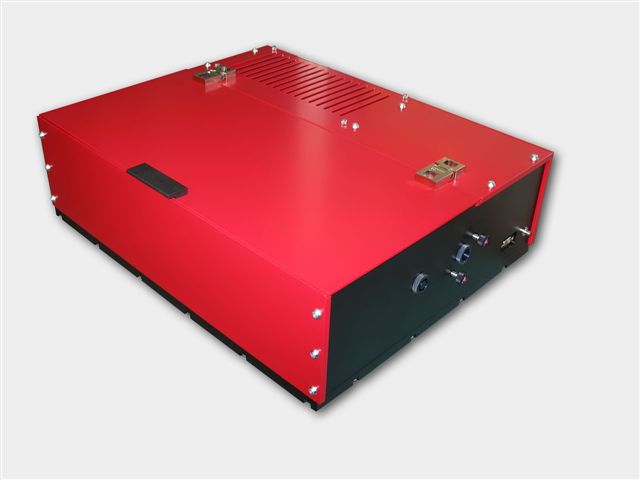 |
Trestles LH Ti:Sapphire
laser Trestles LH is a new series of high quality femtosecond Ti:Sapphire lasers for applications in scientific research, biological imaging, life sciences and precision material processing. Trestles LH includes integrated sealed, turn-key, cost-effective, diode-pumped solid-state (DPSS). Trestles LH lasers offer the most attractive pricing on the market combined with excellent performance and reliability. DPSS LH is a state-of-the-art laser designed for today’s applications. It combines superb performance and tremendous value for today’s market and has numerous advantages over all other DPSS lasers suitable for Ti:Sapphire pumping. Trestles LH can be customized to fit customer requirements and budget. Reserve a
spot in our
Femtosecond lasers training
workshop in San Diego, California. Come to learn how to build a
femtosecond laser from a kit |
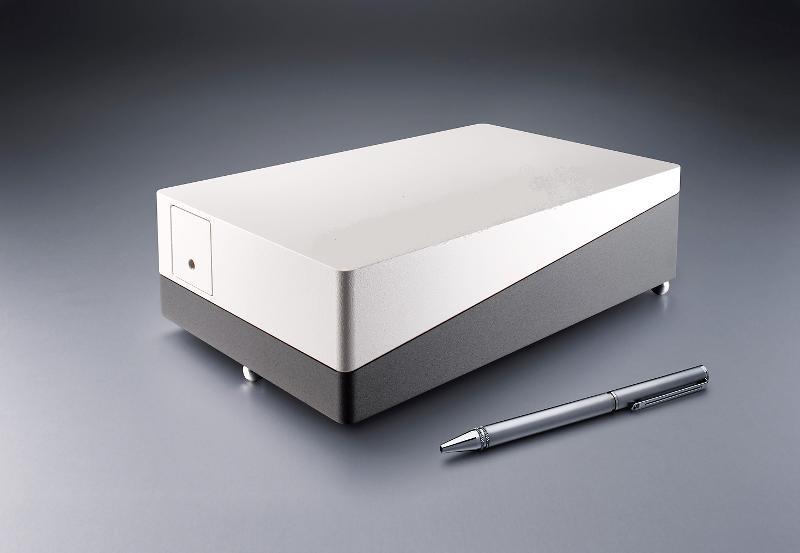 |
DPSS DMPLH lasers |
 |
New laser spectrometer
T&D-scan for research that
demands high resolution and high spectral
density in UV-VIS-NIR spectral domains - now available with
new pump option! The T&D-scan includes a CW ultra-wide-tunable narrow-line laser, high-precision wavelength meter, an electronic control unit driven through USB interface as well as a software package. Novel advanced design of the fundamental laser component implements efficient intra-cavity frequency doubling as well as provides a state-of-the-art combined ultra-wide-tunable Ti:Sapphire & Dye laser capable of covering together a super-broad spectral range between 275 and 1100 nm. Wavelength selection components as well as the position of the non-linear crystal are precisely tuned by a closed-loop control system, which incorporates highly accurate wavelength meter. Reserve a
spot in our
CW lasers training
workshop in San Diego, California. Come to
learn how to build a
CW
Ti:Sapphire laser from a kit |
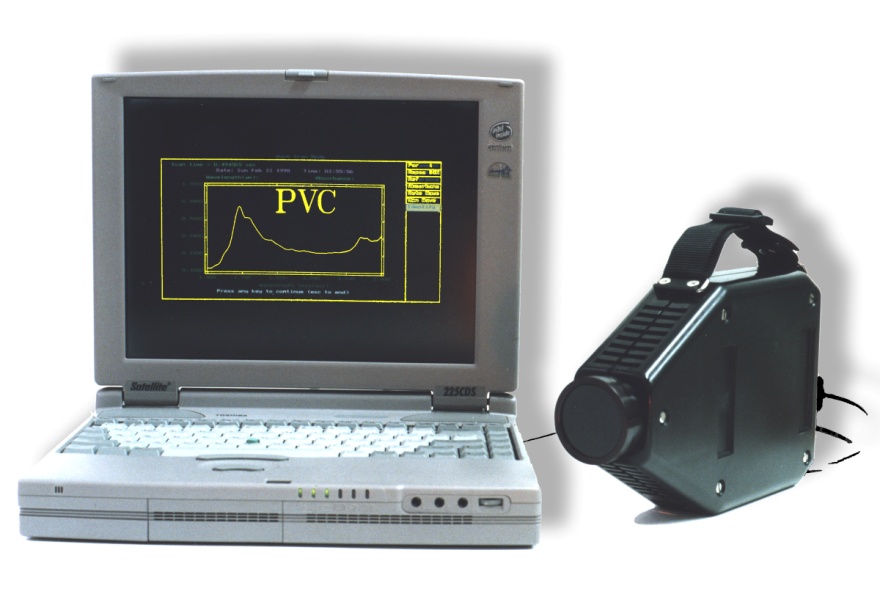 |
AOTF Infrared Spectrometer |
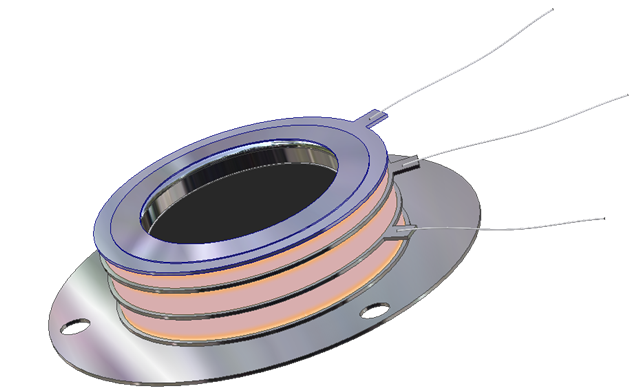 |
Open Microchannel Plate Detector
MCP-MA25/2 -
now in stock! |
 |
Hummingbird EMCCD camera The digital Hummingbird EMCCD camera combines high sensitivity, speed and high resolution. It uses Texas Instruments' 1MegaPixel Frame Transfer Impactron device which provides QE up to 65%. Hummingbird comes with a standard CameraLink output. It is the smallest and most rugged 1MP EMCCD camera in the world. It is ideally suited for any low imaging application such as hyperspectral imaging, X-ray imaging, Astronomy and low light surveillance. It is small, lightweight, low power and is therefore the ideal camera for OEM and integrators. buy online |
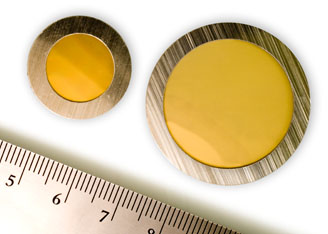 |
Terahertz systems, set ups and components New band pass and long pass THz optical filters based on porous silicon and metal mesh technologies. Band pass filters with center wavelengths from 30 THz into GHz range and transmissions up to 80% or better. Standard designs with clear aperture diameters from 12.5 to 37.5 mm. Long pass filters with standard rejection edge wavelengths from 60 THz into GHz range. Maximum transmission up to 80% or better, standard designs at 19.0 and 25.4 mm diameters. Excellent thermal (from cryogenic to 600 K) and mechanical properties THz products: THz Spectrometer kit with Antenna THz transmission setup THz time domain spectrometer Pacifica fs1060pca THz time domain spectrometer Pacifica fs780pca THz detectors: Golay cell and LiTaO3 piroelectric detectors PCA - Photoconductive Antenna as THz photomixer Pacifica THz Time Domain Spectrometer - Trestles Pacifica Holographic Fourier Transform Spectrometer for THz Region Wedge TiSapphire Multipass Amplifier System - THz pulses generation Terahertz Spectroscopic Radar Mobile System for Detection of Concealed Explosives Band pass filters with center wavelengths from 30 THz into GHz range Long pass filters with standard rejection edge wavelengths from 60 THz into GHz range Generation of THz radiation using lithium niobate Terahertz crystals (THz): ZnTe, GaP, LiNbO3 - Wedge ZnTe |
 |
iPCA - interdigital Photoconductive Antenna for terahertz waves Large area broadband antenna with lens array and high emitter conversion efficiency iPCA with LT-GaAs absorber, microlens array for laser excitation wavelengths l £ 850 nm, adjusted hyperhemispherical silicon lens with a high power conversion efficiency of 0.2 mW THz power / W optical power. The iPCA can be used also as large area THz detector. The two types iPCAp and iPCAs have the same active interdigital antenna area but different contact pad directions with respect to the electrical THz field. Interdigital Photoconductive Antenna for terahertz waves generation using femtosecond Ti:Sapphire laser THz books |
 |
IntraStage lowers the cost
of test data management! Struggling with gigabytes or terabytes of test data? IntraStage easily transforms test data from disparate sources into web-based quality metrics and engineering intelligence you can use.
Contact
us today to discuss your test management requirements and specifications of your
application. |
Training Workshops
|
|
Come to San Diego next summer! Attend one of our training workshops in San Diego, California
during summer 2011 Del Mar Photonics has presented training workshops for customers and potential customers in the past 3 years. Our workshops cover scientific basics, technical details and provide generous time for hands-on training. Each workshop is a three-day seminar conducted by professional lecturer from 10am to 4pm. It includes lunch, as well as a training materials. We have also reserved two days for Q&A sessions, one-on-one system integration discussions, social networking, and San Diego sightseeing.
The following training workshops will be offered during this
summer: |
Featured Customer
|
|
Trestles LH10-fs/CW laser system at UC Santa Cruz Center of Nanoscale Optofluidics
Del
Mar Photonics offers new
Trestles fs/CW laser system which can be easily
switched from femtosecond mode to CW and back. Having both modes of operation in one system dramatically increase a
number of applications that the laser can be used for, and makes it an ideal
tool for scientific lab involved in multiple research projects. |
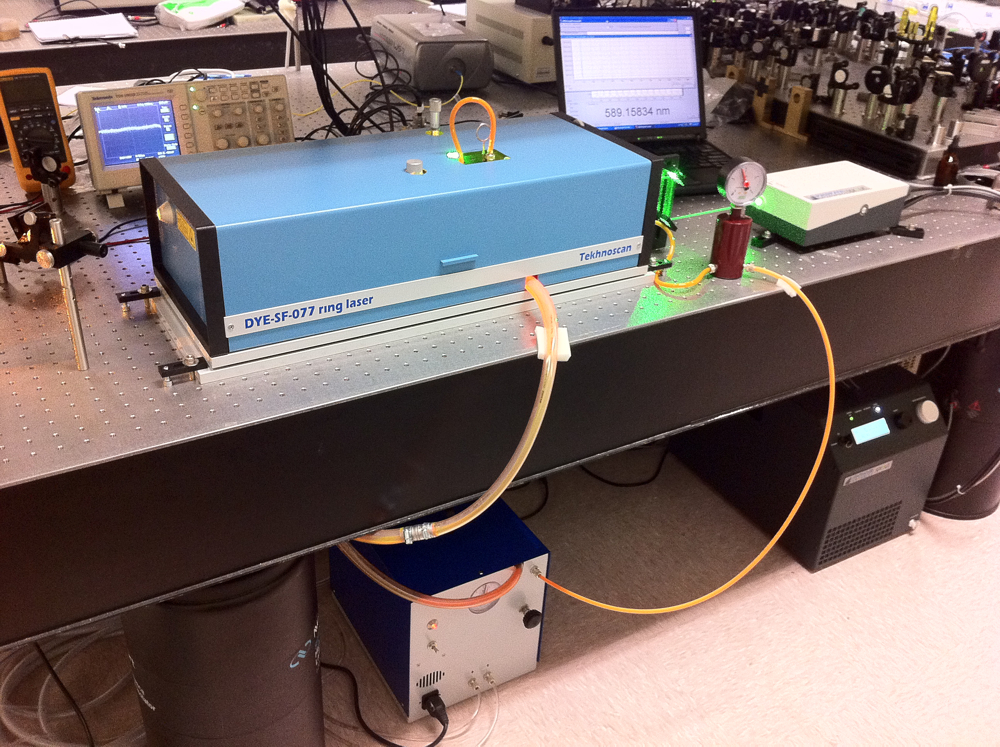 |
Frequency-stabilized CW single-frequency ring Dye laser DYE-SF-007 pumped by DPSS DMPLH laser installed in the brand new group of Dr. Dajun Wang at the The Chinese University of Hong Kong. DYE-SF-077 features exceptionally narrow generation line width, which amounts to less than 100 kHz. DYE-SF-077 sets new standard for generation line width of commercial lasers. Prior to this model, the narrowest line-width of commercial dye lasers was as broad as 500 kHz - 1 MHz. It is necessary to note that the 100-kHz line-width is achieved in DYE-SF-077 without the use of an acousto-optical modulator, which, as a rule, complicates the design and introduces additional losses. A specially designed ultra-fast PZT is used for efficient suppression of radiation frequency fluctuations in a broad frequency range. DYE-SF-077 will be used in resaerch of Ultracold polar molecules, Bose-Einstein condensate and quantum degenerate Fermi gas and High resolution spectroscopy |
Other News
Optical Society of Southern California meeting at UCSD OSSC 2011-04-27
Nd:YAG laser ordered by the University of Leon, UANL, Mexico
Wedge 50 Multipass Amplifier pumped with a Darwin-527-30-M DPSS Laser
ordered by Hong Kong customer
New
Trestles LH10-fs/CW femtosecond+CW laser ready for delivery to the
University of California Santa Cruz
Trestles femtosecond
Ti:Sapphire laser delivered to North Carolina State
University
Del Mar Photonics sponsor IONS (International OSA Network of Students)
conference IONS-NA-2 in Tucson, Arizona
IONS-NA-2
website
Best talk and best
poster awards at IONS-Moscow 2010 conference sponsored by Del Mar Photonics
Watch Del Mar Photonics
videos!
Del Mar Photonics is now on Twitter!
Del Mar Photonics featured components
Del Mar Photonics continuously expands its components portfolio.
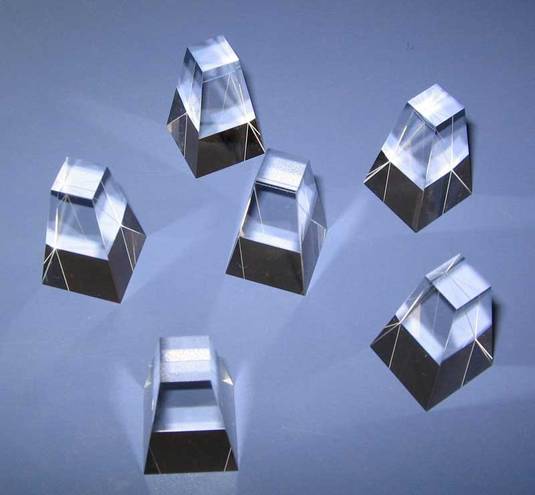 |
Solar
Prisms for Concentrating Photovoltaic Systems (CPV) Solar cells made of compound semiconductors such as gallium arsenide are very expensive. Usually very small cells are installed and various means such as mirrors, lenses, prisms, etc..are used to concentrate sunlight on the cells. Concentration photovoltaic technology (CPV) uses the solar radiation with an efficiency of 40%, double that of conventional solar cells Del Mar Photonics design custom Concentrating Photovoltaic Systems (CPV) and supply variety of the optical components for CPV such as solar prisms shown in the picture. |
|
|
Axicon Lens Axicon lens also known as conical lens or rotationally symmetric prism is widely used in different scientific research and application. Axicon can be used to convert a parallel laser beam into a ring, to create a non diffractive Bessel beam or to focus a parallel beam into long focus depth. Del Mar Photonics supplies axicons with cone angles range from 130° to 179.5° for use with virtually any laser radiation. We manufacture and supply axicons made from BK7 glass, fused silica and other materials. download brochure - request a quote |
 |
Rutile (TiO2) coupling
prisms Del Mar Photonics offers optical elements made of high quality synthetically grown Rutile Titanium Dioxide crystals. Rutile’s strong birefringency, wide transmission range and good mechanical properties make it suitable for fabrication of polarizing cubes, prisms and optical isolators. Boules having high optical transmission and homogeneity are grown by proprietary method. Typical boules have 10 - 15 mm in dia. and up to 25 mm length. Optical elements sizes - from 2 x 2 x 1 mm to 12.7 x 12.7 x 12.7 mm. Laser grade polish quality is available for finished elements. So far we the largest elements that we manufactured are 12 x15 x 5 mm, in which optical axis is parallel to 15 mm edge, 5 mm is along beam path, 12 x 15 mm faces polished 20/10 S/D, one wave flatness, parallelism < 3 arc.min. (better specs. available on request). more details - download brochure - request a quote |
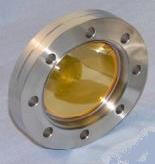 |
Vacuum viewport Del Mar Photonics offer a range of competitively priced UHV viewports , Conflat, ISO or KF including a variety of coatings to enhance performance. Del Mar Photonics viewports are manufactured using advanced techniques for control of special and critical processes, including 100 percent helium leak testing and x-ray measurements for metallization control. Windows Materials include: Fused silica, Quartz , Sapphire , MgF2, BaF2, CaF2, ZnSe, ZnS, Ge, Si, Pyrex. Standard Viewing diameters from .55" to 1.94 ". Coating - a range of custom coatings can applied - which include - Single QWOT - Broad Band AR - V coatings - ITO - DLC (Diamond like coating) more details - request a quote |

|
Hydrogen
Thyratrons are used in
such devices as radars with different power levels, high-power pulsed
technical, electrophysical, medical devices and lasers. Sophisticated
design and high quality ceramic-metal envelope determines long lifetime
and very accurate and reliable operation of hydrogen thyratrons under wide range of environmental
conditions. Applications: - radars - pulsed lasers power supplies - medical apparatus - electrophysical instrumentation Triggered Three-Electrode Spark Gap Switches are ceramic-metal sealed off gas discharge trigatron-type devices with a co-axial trigger electrode. These Gas Discharge Tubes contain no mercury and, due to an advanced design, feature high reliability and a long lifetime being operating under wide range of environmental conditions. Applications: - pulsed installation for processing materials - installations with plasma focus - pulse power supplies for lasers and other pulse equipment - medical apparatus such as lithotriptors and defibrillators - processing systems for petroleum wells |
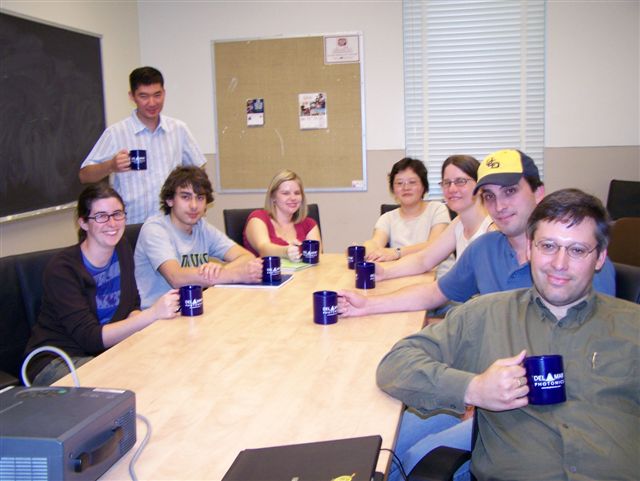 |
We are looking forward to hear from you and help you with your optical and crystal components requirements. Need time to think about it? Drop us a line and we'll send you beautiful Del Mar Photonics mug (or two) so you can have a tea party with your colleagues and discuss your potential needs. |

Del Mar Photonics, Inc.
4119 Twilight Ridge
San Diego, CA 92130
tel: (858) 876-3133
fax: (858) 630-2376
Skype: delmarphotonics
sales@dmphotonics.com
THz wave up-frequency turning by rapidly plasma creation
Paper 8119-19 of Conference 8119
Date: Sunday, 21 August 2011
Author(s): Masahiro Nakata, Takeshi Higashiguchi, Noboru Yugami, Utsunomiya
Univ. (Japan); Yasuhiko Sentoku, Univ. of Nevada, Reno (United States);
Ryosuke Kodama, Osaka Univ. (Japan)
When plasmas are instantaneously created around an electromagnetic wave,
frequency of the wave up-converted to the frequency, which depends on the
plasma frequency. We have demonstrated the proof of principle experiment
using the interaction between a terahertz wave and plasmas created by an
ultra short laser pulse, which ensures the plasma creation time-scale much
shorter than a period of electromagnetic source wave and plasma length
longer than a wavelength of the wave. We observed frequency up-conversion
from 0.35 THz to 3.3 THz by the irradiance of the Ti:sapphire laser in ZnSe
crystal.
Active infrared metamaterials
Paper 8095-4 of Conference 8095
Date: Monday, 22 August 2011
Author(s): Igal Brener, Sandia National Labs. (United States)
In this talk I will review the current status of electrically tunable
metamaterials, both at Terahertz and shorter infrared frequencies. Scaling
these active devices to mid and near infrared optical frequencies poses
considerable challenges and requires new tuning mechanisms. Some examples
include controlling coupling to other dipolar resonances such as phonons and
engineered transitions in semiconductor heterostructures.
Nanoparticle dispersed metamaterial sensors for
intelligence, surveillance and reconnaissance (ISR) applications
Paper 8165B-53 of Conference 8165B
Date: Thursday, 25 August 2011
Author(s): Partha Banerjee, Georges T. Nehmetallah, Rola Aylo, Univ. of
Dayton (United States); Stanley Rogers, Air Force Research Lab. (United
States)
We propose tunable single-layer and multi-layer (periodic and with defect)
structures comprising nanoparticle dispersed metamaterials in suitable
hosts, including adaptive coded aperture constructs, for possible Adaptive
Coded Aperture Imaging (ACAI) applications in microbolometry,
pressure/temperature sensors, and directed energy transfer, over a wide
frequency range, from visible to terahertz. These structures are easy to
fabricate, are low-cost and tunable, and offer enhanced functionality, such
as perfect absorption (in the case of bolometry) and low cross-talk (for
sensors). Properties of the nanoparticle dispersed metamaterial are
determined using effective medium theory.
Nonlinear meta-atoms for multi-functional metamaterials
Paper 8093-3 of Conference 8093
Date: Sunday, 21 August 2011
Author(s): John F. O'Hara, Los Alamos National Lab. (United States) and
Oklahoma State Univ. (United States); Matthew Reiten, Lawrence M. Earley,
Dibakar Roy Chowdhury, Jiangfeng Zhou, Antoinette J. Taylor, Los Alamos
National Lab. (United States)
Nonlinearity adds an unprecedented amount of design flexibility and
functionality to technology and is becoming increasingly studied in the
context of metamaterials. Nonlinearity is the key to gain, bistability,
photon mixing, rectification, and myriad other phenomena. Nonlinear behavior
in natural materials begins at the atomic structure. We present a brief
survey of some of the fundamentals of nonlinearity in natural materials.
Then we present some recent progress in studying analogous behavior in
metamaterials and meta-atoms, the fundamental building block of
metamaterials. Specifically, we show microwave and terahertz frequency
meta-atoms that support self-sustained oscillations, harmonic generation,
chaotic broadband generation, and injection locking/pulling.
Limitations of THz QCLs, an experimental approach and an
alternative
Paper 8119-7 of Conference 8119
Date: Sunday, 21 August 2011
Author(s): Nicolas Péré-Laperne, Ctr. National de la Recherche Scientifique
(France); Louis-Anne de Vaulchier, Yves Guldner, Ecole Normale Supérieure
(France)
Terahertz quantum cascade lasers (QCLs), based on AlGaAs/GaAs
heterostructures, are limited in terms of working temperature and supply. We
present experimental data on one particular QCL structure under a strong
magnetic field applied parallel to the growth axis. The emitted power shows
strong oscillations as a function of B. The analysis of these oscillations
exhibits two mechanisms of non-radiative relaxation, an elastic scattering
mechanism (interface roughness) and an inelastic one (LO-phonon). This
latter scattering process is put in evidence thanks to magnetic field but is
limiting operation at high temperature without B. One possible alternative
is the use of another material, AlGaN/GaN heterostructures. Thanks to its
high value of LO phonon energy, this material theoretically demonstrates the
ability to emit in the THz range at room temperature. We are presenting two
structures, one optically pumped and another one electrically pumped.
mm wave and THz imaging using very inexpensive
neon-indicator lamp detector focal-plane arrays
Paper 8119-16 of Conference 8119
Date: Sunday, 21 August 2011
Author(s): Natan S. Kopeika, Ben-Gurion Univ. of the Negev (Israel); Amir
Abramovich, Ariel Univ. Ctr. of Samaria (Israel); Assaf Levanon, Daniel
Rozban, Avihai Akram, Ben-Gurion Univ. of the Negev (Israel) and Ariel Univ.
Ctr. of Samaria (Israel); Hezi Joseph, Ben-Gurion Univ. of the Negev
(Israel); Orly Yadid-Pecht, Ben-Gurion Univ. of the Negev (Israel) and Univ.
of Calgary (Canada); Alex Belenky, Simon Lineykin, Ben-Gurion Univ. of the
Negev (Israel)
Hide Abstract
The chief bottleneck holding back development of inexpensive real time mm
wave and terahertz imaging is the cost of detectors. One solution is the use
of neon indicator lamps costing typically about 30 - 50 cents each as
detectors. NEP is typically on the order of 10-9 W/Hz1/2 in direct
detection. In heterodyne detection, minimum detectable signal is about 2
orders of magnitude less than in direct detection, and decreases with
increasing reference power. Focal plane arrays of 8X8 such detectors have
been constructed, and good quality 32X32 pixel images obtained at 100 GHz.
Presently, a new board to record 32X32 pixel images with a single snapshot
each is under construction and should be available shortly. We plan to use
it to obtain not only 32X32 pixel images, but also 64X64 and, hopefully,
128X128 pixel images as well.